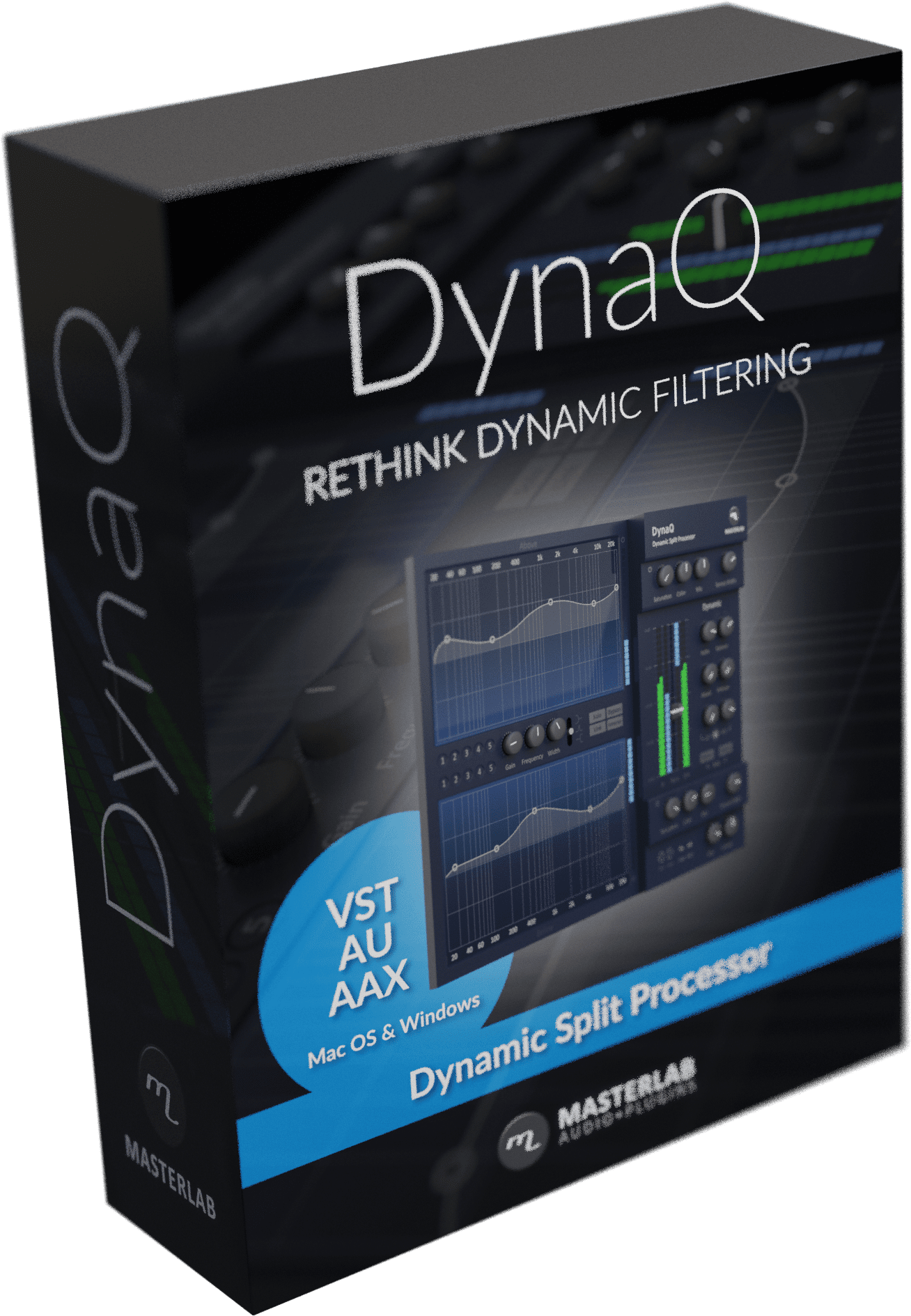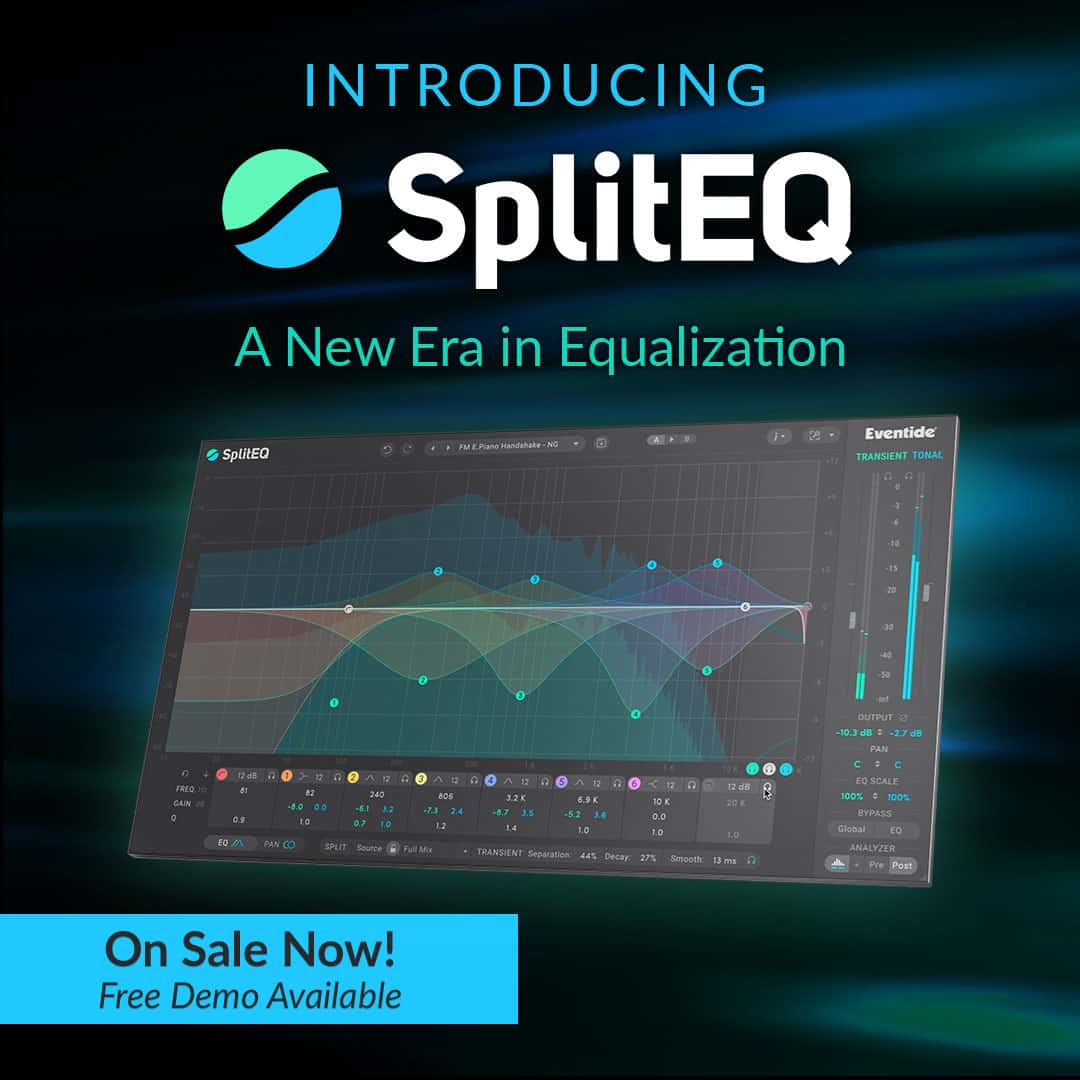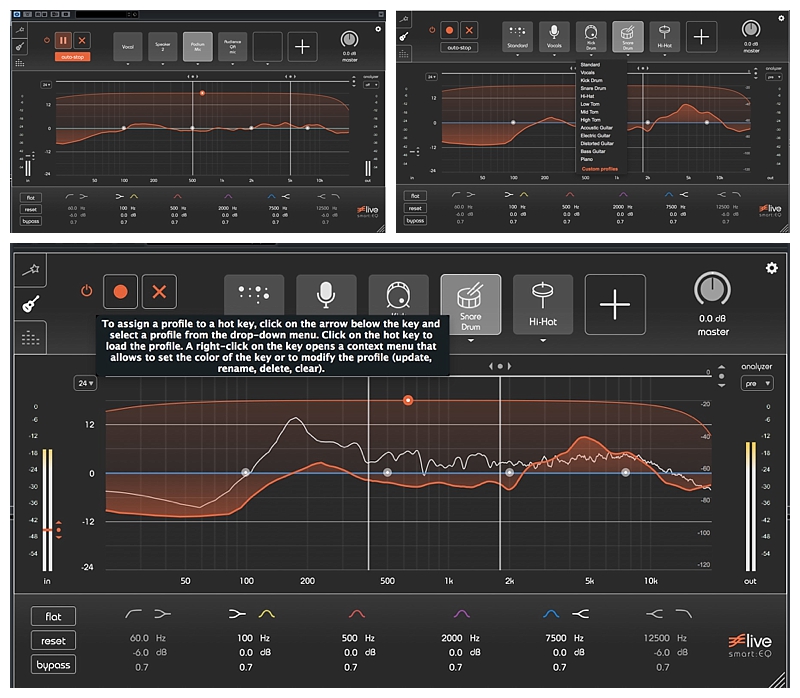Dynamic Split Processing with DynaQ
DynaQ is the first plugin, that supports the processing of the below and the above-threshold signal independently, at the same time. wants to bring balance to your mixes by fitting signals into the mix or doing creative sound design. Dynamic Split Processing is available through this new EQ plugin.
Where would you use DynaQ
- Removing unwanted rumble in drums
- Reducing the proximity effect of too closely recorded vocals without destroying the foundation of louder notes
- Processing specific elements of drums like the snare and kick by using the sidechain filter
- Bringing not optimal recorded signals or sounds back to life
- Adding analog sparkle to the floor without crushing transients
- Creating beautiful stereo widening, just on floor or transients
- Shaping and tweaking transients

DynaQ Features
- Dynamic Split Processing
- Below & Above 5 Band EQ
- Below & Above Analog Style Saturation
- Below & Above Stereo Width
- State of the Art Algorithms

DynaQ is the first plugin that supports what Masterlab Audio calls Dynamic Split Processing and that makes it unique among all other dynamic EQs










